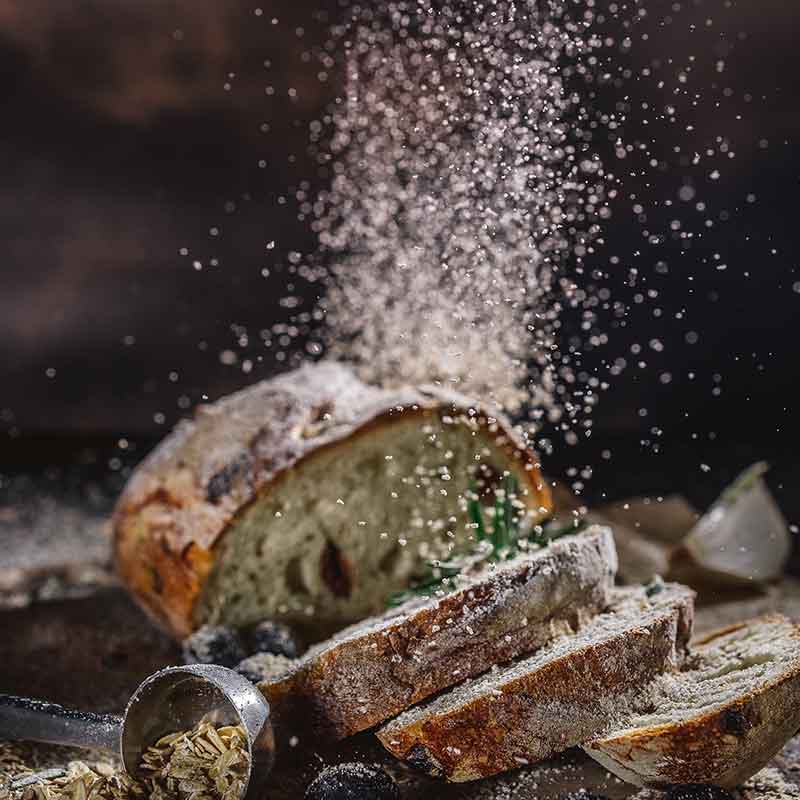Are sodium saccharin products safe to use?
Sodium saccharin, scientific name sodium o-benzoylsulfonimide, is also known as soluble saccharin. Sodium saccharin is the sodium salt of saccharin, in the form of white powder, odorless or aroma, with a strong sweet, and bitter taste.
As the first artificial sweetener to be discovered, sodium saccharin is a very interesting product. Its sweetness is about 300-500 times that of sucrose, and it was very popular in the market as soon as it came out. But then it was regulated by the US Food and Drug Administration (FDA) in the 1970s that the use of saccharin should be marked on the label that “the use of this product may be harmful to health, and this product contains saccharin that can cause cancer in laboratory animals”.

The origin of sodium saccharin
The story begins with the “discovery” of saccharin. One day in 1879, Constantin Fahlberg was doing experiments at the laboratory of Johns Hopkins University. He may have forgotten to wash his hands at dinner and found out that the steak is sweet and so is the cutlery. Yet, the sweetness related to the pencil he wrote on in the lab. Later, he found that the sweetness came from a chemical called sodium sulfonyl benzene imide. After many twists and turns, Constantin Fahlberg finally extracted a particularly sweet white crystal from coal tar, which he called “saccharin”.
There may be more than one version of the story that sodium saccharin was “discovered”, and the above is one of them. But no matter what it says, it cannot change the origin of sodium saccharin as an organic chemical synthetic product. As the main raw materials of saccharin are toluene, chlorosulfonic acid, o-toluidine, etc., which are petrochemical products. It makes people doubt whether it is safe to human health. And there are animal experiments have pointed out that sodium saccharin has the possibility of causing bladder cancer, leading to the introduction of the above regulations by the US Food and Drug Administration.
Despite these “negative” news, it has not affected its widespread use in the food processing industry.
How does this happen?
High sweetness is definitely a factor. Sodium saccharin is about 300-500 times sweeter than sucrose. Its 1/100,000 aqueous solution still has a sweet taste! Besides to the sweetness in the taste, sodium saccharin does not take part in human metabolism and has no nutritional value to the human body. It is such a factor that seems to have no value in nutrition but plays a light role, which is related to its non-sugar substance.
Non-sugar substances are substances that do not contain sugar compounds. Sugars are what we usually call carbohydrates. They are nutritious and take part in human metabolism, and their sugar and calories are high. Yet, excessive intake can easily increase the burden on the body, which is regarded as a thorn in the side of diabetic patients and dieters. If there is a lack of sweet substances in life, many foods will be hard to swallow.
Thus, the market needs sweeteners with fewer calories that do not affect the blood sugar level and insulin level of the human body, sugar-free foods, and sweet substances that can replace natural sugars. The emergence of sodium saccharin and its characteristics are just in line with market demand or make up for the “market defect” of sugar substances.
Why is sodium saccharin still can be used today?
With the controversy over the safety of sodium saccharin uses, research has been carried out internationally. After years of research, it is safe to use sodium saccharin reasonably according to regulations. Sodium saccharin is no longer considered a substance with potential risks to human health.
After the US FDA withdrew its proposal to ban saccharin in 1991, in December 2010, the US Environmental Protection Agency, under the US Resource Conservation and Recycling Act, removed from hazardous ingredients and processing chemicals Saccharin and its salts. And removed from the list of hazardous commercial chemicals to be disposed of.

However, more sweeteners with similar characteristics of sodium saccharin appeared on the market one after another. They are two types:
- Non-sugar substances, like licorice, steviol glycosides, and mogrosides. There are artificial sweeteners such as sodium cyclamate, calcium cyclamate, acesulfame potassium, and aspartame. They are characterized by high sugar content, which is dozens to hundreds of times that of sucrose. But they are all non-nutritive sweet substances and do not take part in human metabolism.
- Sugar alcohol sweetener. Its sweetness is like that of sucrose, with low sweetness and nutrition. But, because it has a different metabolic process from glucose, it has a lower calorific value and does not cause dental caries. Its main varieties are erythritol, D-mannitol, maltitol and maltitol liquid, xylitol, lactitol, sorbitol and sorbitol liquid, isomalt, and so on.
Non-sugar natural sweeteners and non-sugar artificial sweeteners, as well as sugar alcohol artificial sweeteners, have fewer calories, some even zero calories, and most of them do not affect blood sugar levels and insulin levels. It can meet the needs of diabetic patients, low-sugar consumption, and other aspects of the market demand, so it is called a “sugar substitute”. Foods that use them purely can be labeled “sugar-free” on the packaging, which is popular with diabetics and healthy people.
Although sodium saccharin is a synthetic sweetener, its high sweetness, “sugar substitute” status, and cost advantages that are much lower than natural sugars make it widely favored by food companies. And as a food sweetener, it is widely used in food processing, which is why saccharin sodium sells well in the market.
RECENT POSTS
ANY QUESTIONS?
Thank you very much for visiting our website. If you have any further questions or requests, please do not hesitate to contact us.
Send us an e-mail and you will receive an answer shortly.
